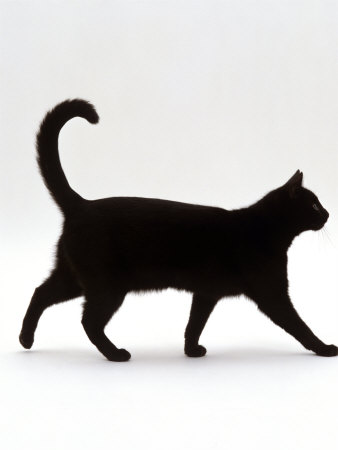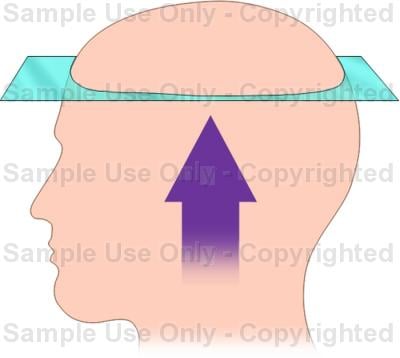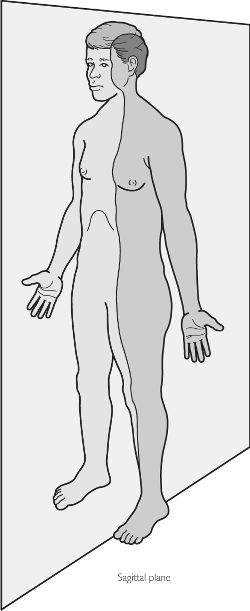Anatomy & Physiology: Body Cavities And Anatomical Directions

A quiz testing knowledge of body cavities in the human body and anatomical directions.
- 1.
The eyes are lateral to the nose.
- A.
True
- B.
False
Correct Answer
A. TrueExplanation
The statement "The eyes are lateral to the nose" is true. Lateral refers to the side or outer part of something. In this case, it means that the eyes are situated to the sides of the nose. This is anatomically accurate as the eyes are located on either side of the nose on a person's face.Rate this question:
-
- 2.
The shoulders are superior to the hips.
- A.
True
- B.
False
Correct Answer
A. TrueExplanation
The statement "The shoulders are superior to the hips" is true because anatomically, the shoulders are located above the hips. The term "superior" in anatomy refers to a structure being positioned above another structure. In the human body, the shoulders are situated higher than the hips, making the statement true.Rate this question:
-
- 3.
The hand is distal to the elbow.
- A.
True
- B.
False
Correct Answer
A. TrueExplanation
The statement "The hand is distal to the elbow" is true. In anatomical terms, distal refers to a position farther away from the point of attachment or reference. The hand is located farther away from the point of attachment (the elbow) in the upper limb. Therefore, the hand is distal to the elbow.Rate this question:
-
- 4.
Toward the front of the body is __________ and toward the rear of the body is ___________. [separate answers with a comma]
Correct Answer
anterior, posteriorExplanation
The correct answer is anterior, posterior. "Anterior" refers to the direction towards the front of the body, while "posterior" refers to the direction towards the rear of the body. These terms are commonly used in anatomy to describe the relative positions of different body parts or structures.Rate this question:
- 5.
Something that is along(toward) the belly surface of the body is ___________.
- A.
Inferior
- B.
Proximal
- C.
Ventral
- D.
Deep
Correct Answer
C. VentralExplanation
Ventral refers to the belly side or front side of the body. It is the opposite of dorsal, which refers to the back side of the body. Therefore, if something is along or toward the belly surface of the body, it can be described as ventral.Rate this question:
-
- 6.
When referencing animals, such as a cat, rather than using superior and inferior you would use: _________ and __________.
- A.
Visceral and parietal
- B.
Cephalad and caudal
- C.
Superficial and deep
- D.
Left and right
Correct Answer
B. Cephalad and caudalExplanation
When referencing animals, such as a cat, rather than using superior and inferior you would use cephalad and caudal. "Cephalad" refers to a direction towards the head or the front end of the body, while "caudal" refers to a direction towards the tail or the back end of the body. These terms are more commonly used in anatomical descriptions of animals to indicate specific positions or locations.Rate this question:
-
- 7.
This is an example of what kind of cut?
- A.
Sagittal cut
- B.
Frontal cut
- C.
Transverse/ horizontal cut
Correct Answer
C. Transverse/ horizontal cutExplanation
This question is asking about the type of cut being depicted. The correct answer is "transverse/horizontal cut." A transverse or horizontal cut refers to a slice made across the body or an organ in a direction parallel to the ground. This type of cut divides the body or organ into upper and lower portions. It is different from a sagittal cut, which divides the body into left and right portions, and a frontal cut, which divides the body into front and back portions.Rate this question:
-
- 8.
This is an example of a saggital cut.
- A.
True
- B.
False
Correct Answer
A. TrueExplanation
This statement is true because a sagittal cut refers to a section or slice made vertically from front to back, dividing the body into left and right halves. Therefore, if the statement says that this is an example of a sagittal cut, it means that the cut being referred to is made in a vertical plane dividing the body into left and right sides.Rate this question:
-
- 9.
The membrane that is found around all organs, encasing them for protection and stability, is called ______________ membrane.
Correct Answer
serousExplanation
The correct answer is "serous." The serous membrane is a protective layer that surrounds and encases organs, providing stability and preventing friction between organs. It secretes a fluid called serous fluid, which lubricates the organs and allows them to move smoothly. This membrane plays a crucial role in maintaining the integrity and function of the organs it surrounds.Rate this question:
- 10.
The mediastinum is located inside which cavity?
- A.
Pelvic cavity
- B.
Thoracic cavity
- C.
Cranial cavity
- D.
Visceral cavity
Correct Answer
B. Thoracic cavityExplanation
The mediastinum is located in the thoracic cavity. The thoracic cavity is the space within the chest, surrounded by the ribcage and separated from the abdominal cavity by the diaphragm. The mediastinum is a central compartment within the thoracic cavity that contains the heart, major blood vessels, esophagus, trachea, and other structures. It is responsible for housing and protecting these vital organs and structures.Rate this question:
-
- 11.
The part of the serous membrane that touches the organ that it is encasing is called the parietal serous membrane.
- A.
True
- B.
False
Correct Answer
B. FalseExplanation
The correct answer is False because the part of the serous membrane that touches the organ is actually called the visceral serous membrane, not the parietal serous membrane. The parietal serous membrane lines the body cavity and does not directly touch the organ.Rate this question:
-
- 12.
What thick muscle separates the thoracic cavity from the abdominopelvic cavity?
- A.
Diaphragm
- B.
Smooth muscle
- C.
Visceral pericardial muscle
- D.
Thymus
Correct Answer
A. DiaphragmExplanation
The diaphragm is a thick muscle that separates the thoracic cavity from the abdominopelvic cavity. It plays a crucial role in respiration by contracting and relaxing to control the movement of air in and out of the lungs. When it contracts, it flattens and moves downward, increasing the volume of the thoracic cavity and allowing the lungs to expand. This creates a pressure difference that draws air into the lungs. When it relaxes, it moves upwards, decreasing the volume of the thoracic cavity and causing the lungs to deflate, expelling air.Rate this question:
-
- 13.
There are 3 serous-membrane lined cavities in the the Thoracic Cavity. What are they? Check all the apply.
- A.
Left Pleural Cavity
- B.
Peritoneal Cavity
- C.
Right Pleural Cavity
- D.
Ventral Cavity
- E.
Pericardial Cavity
Correct Answer(s)
A. Left Pleural Cavity
C. Right Pleural Cavity
E. Pericardial CavityExplanation
The correct answer is Left Pleural Cavity, Right Pleural Cavity, and Pericardial Cavity. These three cavities are lined with serous membranes and are located within the thoracic cavity. The pleural cavities are found on either side of the thoracic cavity and contain the lungs. The pericardial cavity is located in the center of the thoracic cavity and contains the heart. The ventral cavity and peritoneal cavity are not located within the thoracic cavity and are therefore not correct answers.Rate this question:
-
- 14.
The abodominopelvic cavity contains a serous membrane-lined cavity called the ________________ cavity.
- A.
Parietal
- B.
Pleural
- C.
Peritoneal
- D.
Pericardial
- E.
Pelvic
Correct Answer
C. PeritonealExplanation
The correct answer is Peritoneal. The abdominopelvic cavity is a large space in the body that contains various organs, such as the stomach, intestines, liver, and reproductive organs. It is lined by a serous membrane called the peritoneum. The peritoneal cavity is the space between the parietal peritoneum (which lines the abdominal wall) and the visceral peritoneum (which covers the organs within the cavity). This cavity contains a small amount of fluid that helps reduce friction between organs and allows them to move and function properly.Rate this question:
-
- 15.
Some organs are not enclosed by the peritoneal cavity membrane. What are some examples of retroperitoneal organs? [check all that apply]
- A.
Kidney
- B.
Lungs
- C.
Bladder
- D.
Ureter
- E.
Spleen
- F.
Large intestine
Correct Answer(s)
A. Kidney
C. Bladder
D. UreterExplanation
The correct answer is kidney, bladder, and ureter. These organs are considered retroperitoneal because they are located behind the peritoneal cavity membrane. The peritoneal cavity is a space in the abdomen that contains many organs, but the kidney, bladder, and ureter are positioned outside of this cavity. The lungs, spleen, and large intestine, on the other hand, are not retroperitoneal organs as they are enclosed by the peritoneal cavity membrane.Rate this question:
-
- 16.
Explain where the mesenteries are located and what thier purpose is in the body.
- 17.
Identify and check all the body cavities that are shown in this picture.
- A.
Mediastinum
- B.
Cranial cavity
- C.
Left pleural cavity
- D.
Dorsal body cavity
- E.
Pelvic cavity
- F.
Abdominal cavity
- G.
Spinal cavity
- H.
Nasal cavity
- I.
Right pleural cavity
- J.
Pericardial cavity
Correct Answer(s)
A. Mediastinum
C. Left pleural cavity
E. Pelvic cavity
F. Abdominal cavity
I. Right pleural cavity
J. Pericardial cavity -
Quiz Review Timeline +
Our quizzes are rigorously reviewed, monitored and continuously updated by our expert board to maintain accuracy, relevance, and timeliness.
-
Current Version
-
Mar 21, 2023Quiz Edited by
ProProfs Editorial Team -
Oct 15, 2010Quiz Created by
Carlyh
 Back to top
Back to top






